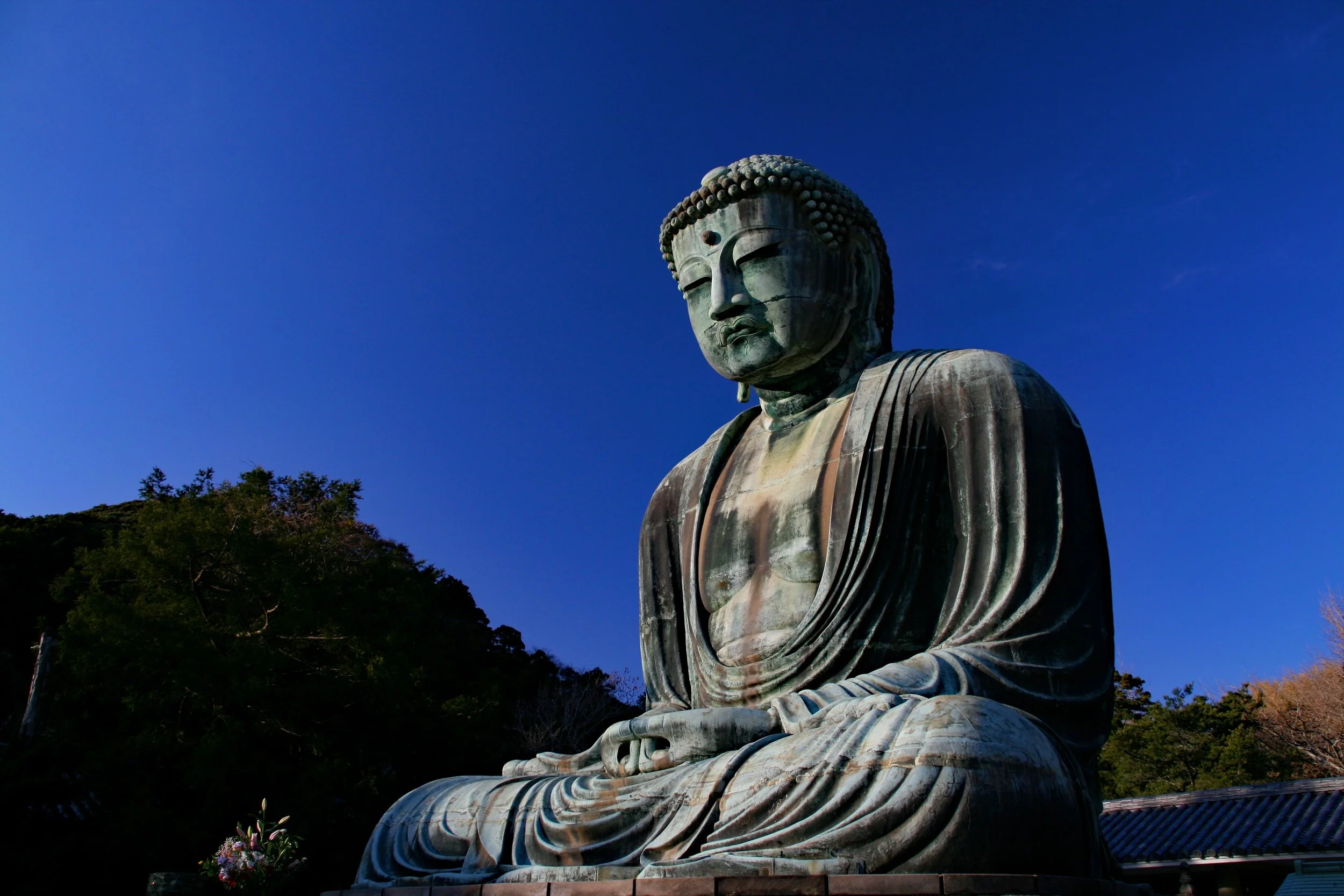What Is Soto Zen Buddhism?
You are that place where the stuff of the universe is shaped like you, and you are inextricable from everything there is. “You” are a gesture the universe is making. Nothing came into being when you were born, nothing will cease to exist when you die. Only the form keeps changing. Your conscious mind is a resonation that comes and goes, a delusion, but a real and useful one.
Two and a half thousand years ago, somewhere south of Kathmandu, a person who would come to be called Awakened (which is to say, Buddha) sat down under a tree and paid attention to what he saw and heard and smelled and tasted and felt.
Everything about himself — his body, his posture, the contents of his mind — was the way it was because everything else was the way it was. The earth, the sun, the tree, the air, the plants and animals, water, rocks, and stars all made a difference. Change them, the man changes also.
And everything was changing all the time.
When all things are inextricable from each other, there are no separate things. And when change is constant, there are no forms you can point to and say, “This is what that is.”
This was quite ordinary. And quite extraordinary. Everything is doing every thing, and nothing has any self or essense that endures moment to moment.
The man sitting under the tree found no abiding self within him, nothing outside him which was separate from him, and no boundary between the two which survived inspection. As the colors and sounds and scents and flavors and feelings changed form in his mind, these were all that were there.
Separation and self, it turned out, were delusions.
Because we believe these delusions are real, we don’t understand who we are. We protect the mirage of our ego against an equally illusory outside world full of objects and other people. We collect material things, call them ours, and fear losing them. We seek pleasures and distractions and fear losing them as well. We try to separate ourselves from what we dislike and fear we will fail.
So we suffer unnecessarily. But we don’t have to, if we can see who we really are. And when we embody our oneness with all things, we naturally say and do what is appropriate. We follow the middle path, neither indulgence nor denial, neither materialism nor nihilism.
Imagine you dream you’re a flower, spending your life among other flowers who bloom and live and die around you. And you notice you’re all on a tree, the same tree. You’re all just different bits of the tree, really. Then the dream gets weird — you look around, and notice there’s nothing that isn’t the tree. The tree is all there is.
Everything you see is part of you, and you’re part of it. You are just the place where the tree is shaped like you, and so is everyone else. And the shapes constantly move and change, and the boundaries between them are arbitrary, mere ideas. Your capacity for compassion deepens,
The Buddha’s teaching spread north into the Himalayas and to the mountains and plains beyond, and south and east along the Bay of Bengal and on to the islands below. In the 6th century, the monk Bodhidarma brought Buddhism to China where the Chan school (the meditation school) formed.
Along the way, Buddhism had picked up many practices and beliefs and produced voluminous scriptures. The Chan school modeled their practice after the Buddha who, it was said, awakened during meditation. They rejected the necessity of lifetimes of practice. Everyone who wakes up can only do so right now, whenever that may be. What’s needed is to see clearly — not to remove all delusion, but to stop confusing it for reality — then to embody that realization, to conform one’s life to that simple truth at all moments.
In the 1200s, a Japanese monk called Dogen went to study in China and returned with Chan — or in Japanese, Zen — Buddhism. Dogen said, if you’re attending to the Buddha Way, you’re attending to yourself. When you attend to yourself, no self is encountered in your mind. When no self is encountered in your mind, the universe is awake where you are. When the universe is awake where you are, the bodies and minds of self and others dissolve. No trace of awakening remains, and this no-trace extends forever.
Zen is not anything to be believed, or believed in. It is a way, a practice of living our lives moment to moment. If you can’t find the truth right where you are, Dogen asked, where do you expect to find it?
Is Zen Buddhism a religion? Well, the Buddha (and those who followed) found that a clear vision of self and delusion and suchness — the ineffable stuff of reality — discerns an implicit morality. Not one dictated by a god, or demanded by priests, or inherited from tradition, but rather one which arises continually from our humanity and our circumstance. To a clear mind, caring for ourselves and others comes as naturally as eating and sleeping, with no philosophical justification required.
Soto Zen Buddhism, then, is a practice of goalless meditation and continual mindfulness which, by illuminating who we are, reveals the delusion of separation and gives rise to compassion, peace of mind, and ethical living.
Or something like that.
Images: Creative Commons license via Pixabay




